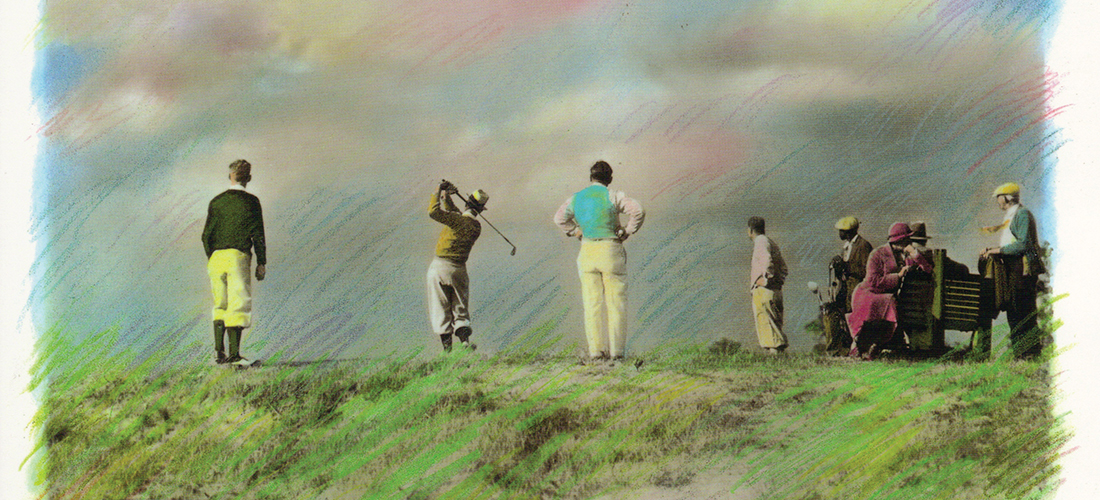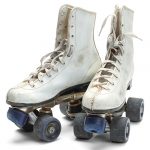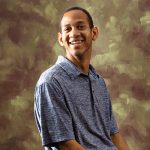
Story Time
Classic voices and classic memories
By Lee Pace
I was merely a babe in the pines in 1990 when the powers that be at Pinehurst Inc. put their historic life in my hands. Why anyone would entrust the concept and execution of a coffee table book on what then was a 95-year-old golf club and resort to the hands of a 33-year-old is beyond me. To write about history, you need a little history yourself, right?
“We were figuring it out as we went along,” says Pat Corso, the man who commissioned that book as part of the club’s branding and campaign to land a major championship on Pinehurst No. 2 — a U.S. Open, PGA Championship or Ryder Cup chief among the targets. Corso, the president and CEO of the resort, was himself not quite 40 at the time.
And he needed that youthful vigor. In 1990 Pinehurst was in year six of being owned by Robert Dedman Sr. and his Dallas-based company, Club Corporation of America, as it was known at the time. Old-timers today forget the degree of problems Dedman inherited, and newbies don’t even know about them. But the grand old resort that has now been the venue for three U.S. Opens since 1999 and is on the docket for five more was gasping for breath in 1984 after two years being run by a consortium of banks holding the bad paper from the previous owner, the Diamondhead Corp.
“Remember that no one wanted this place,” said Corso, who ran the resort from 1987-2004. “The banks brought every big company in the golf and hospitality business through here and everyone went thumbs-down. They thought it was gone. Literally, the place had died. Now, not all the citizens would agree with that. But to a lot of people inside the game and outside, Pinehurst was dead. It was unredeemable. The banks were going to sell off the golf to someone and the hotel to someone else. They made Robert buy the hotel. He just wanted the golf. But marrying the golf to the hotel kept the whole thing alive. Otherwise, you’d have five or six owners and it would have been a free-for-all.”
Corso and his chief lieutenant, Director of Golf Don Padgett Sr., were diligently trying in the late 1980s to restore the good name Pinehurst enjoyed in the golf universe for 75 years under the founding Tufts family. Staging the U.S. Women’s Amateur in 1989 on No. 2 was one step. Now they wanted the PGA Tour or a men’s USGA championship.
And they wanted to remind the current generation and make them aware of what those before had known of “the St. Andrews of American golf.”
So off I went in October 1990 with exactly one year to write, design and print a book with factual and aesthetic substance for Corso and resort officials to hand to golf’s power brokers, competitors, talking heads and ink-stained scribes and say, “This is our story. This is who we are.”
I was rummaging through the files at the Tufts Archives in the village of Pinehurst just as I was getting started when I found Ben Hogan’s file and learned he won his first professional tournament in Pinehurst in 1940, that he teetered on quitting competitive golf altogether after eight fallow years on tour, and that the injection of confidence and swagger he found in the North and South Open on Pinehurst No. 2 catapulted him to one of golf’s most storied careers.
What about, I mused, a book built around the stories of noted individuals in golf and their experiences at Pinehurst?
The dominoes started to fall, and I set about making arrangements over the next six months to visit some very high-profile golfers who had a good Pinehurst story. Now, exactly three decades later, the images of those visits bound past like 35 mm slides in a vintage carousel projector:
Hogan, the “wee ice mon” himself, sitting nattily attired in a seersucker sports coat in his office in Fort Worth, reflecting on that landmark win half a century before;
Ben Crenshaw the very next day in the grill at Barton Creek in Austin remembering his second PGA Tour event, that 144-hole colossus known as the World Open played on the No. 2 and 4 courses in November 1973 and his second-place finish to Miller Barber;
Bill Campbell having lunch at a meat-and-three diner across the street from his insurance office in Huntington, West Virginia, words like “salutary” and “winsome” rolling from his tongue as he talked of his annual April visit to Pinehurst for the North and South Amateur;
Sam Snead rubbing the head of his golden retriever, Meister, sitting in his living room in Fort Pierce, Florida, ruminating on his three victories in the North and South Open and how he thought the short par-4 third hole on No. 2 “was one of the nicest little holes;”
Frank Stranahan appearing in workout togs drinking a vitamin-laced smoothie in the lobby of The Breakers Hotel in Palm Beach, recounting stroke-by-stroke his North and South Amateur finals matches with Harvie Ward in 1948-49;
Harvie Ward himself with that ever-present twinkle in the eye sitting on the porch of the Carolina Hotel in Pinehurst, having returned home to North Carolina in the twilight of his life and admitting it was a little embarrassing the ruckus his Chapel Hill fraternity brothers made in the gallery of those matches with Stranahan, which they split with one championship apiece;
Arnold Palmer and his vice-like handshake and welcoming demeanor in his office at Bay Hill in Orlando and a self-deprecating story about Stranahan dusting his rear end 12 and 11 in the 1949 North and South Amateur and then offering to give Arnie a lesson on bunker play;
Curtis Strange walking a fairway during a practice round at Doral and talking about all his visits to Pinehurst while on the Wake Forest golf team and how caddie Fletcher Gaines helped manage him around the course in winning the 1975-76 North and South Amateurs;
Golf architect Pete Dye rambling into the wee hours at Kiawah Island during Ocean Course construction and speaking of how the tenets of Donald Ross were never far from his mind on every course design project;
Billy Joe Patton pausing from a conversation at his home in Morganton to leave the room and compose himself, the memories of his salad days in Pinehurst in the 1950s and ’60s with his favorite caddie, Jerry Boggan, washing over him.
And those were just the highlights.
I assembled the fruit of these conversations with essays commissioned from golf writing heavyweights Charles Price, Dick Taylor and Herbert Warren Wind, and the result was Pinehurst Stories — A Celebration of Great Golf and Good Times. I know for a fact the book didn’t make any money, but that wasn’t the goal. Two years later the USGA did, in fact, award Pinehurst the 1999 U.S. Open, and the dominoes have been falling ever since. Not that one caused the other, mind you, but perhaps it factored into the mix.
Thirty years. Roll that around in your mind.
I’ve been chasing another assignment like that for three decades to no avail and with a keen appreciation for the old saw, “Youth is wasted on the young.” PS
Lee Pace has made countless drives from his home in Chapel Hill, North Carolina, to the Sandhills 70 miles away to chronicle the Pinehurst story, which includes four books, most recently the 2014 volume, The Golden Age of Pinehurst.





